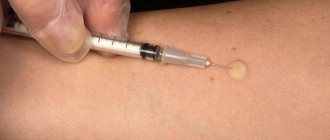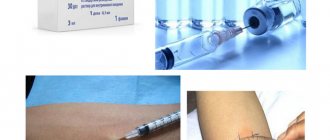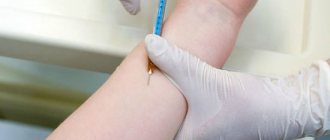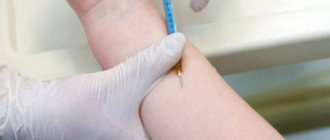A little about tuberculosis
Tuberculosis has been and remains a dangerous infectious disease. Koch's bacillus, or Mycobacterium tuberculosis, the causative agent of the disease, is so aggressive and resistant to the external environment that it can remain viable for several months in dry sputum, on various surfaces.
Mycobacterium is easily transmitted by airborne droplets (coughing, sneezing) and through household contact. Penetrating into the body, the microbe affects various organ systems, but most often these are the chest organs. However, not in all cases tuberculosis is active - approximately a third of the planet’s inhabitants are “owners” of a latent form of the disease, that is, the microbe is present in their body, but the immune system successfully copes with it. Such people do not suffer from tuberculosis (the possibility of activation of the pathology is no more than 10%) and do not pose a danger to others. If the immune system is weakened (HIV, diabetes, chronic disorders, poor nutrition, stress, and so on), the likelihood of developing the disease increases sharply.
ON A NOTE! According to statistics, the incidence of tuberculosis in Russia has decreased in recent years. However, many experts are skeptical about such data, rightly believing that not all cases of infection and mortality were taken into account. Since the times of the USSR, there has been an opinion that only socially disadvantaged people can get tuberculosis. In fact, mycobacterium does not select a person by status. In addition, this attitude towards the disease leads to a situation where “prosperous” people, having fallen ill, try to hide this fact from others, including doctors and relatives.
Another reason for the lack of statistical recording is the stereotype associated with the symptoms of tuberculosis. It is believed that the patient must certainly choke from coughing, spit phlegm with blood, and so on. But such symptoms indicate an already advanced stage, when the disease is difficult to treat. And at the early stage of infection, a person may only feel fatigue, loss of strength, a slight increase in temperature in the evening and other signs that easily fall into the category of “you just need to rest.” As a result, there is no need to see a doctor, tuberculosis progresses and spreads.
Treatment of the disease is long-term and requires taking medications from different groups for several months. In the absence of timely and adequate therapy, the result is death. In addition, tuberculosis is dangerous due to its complications on the brain, bone tissue and others.
Diagnostics of tuberculosis: Mantoux test, Diaskintest, T-spot!
November 03, 2020
News
Diagnosis of tuberculosis: Mantoux test, Diaskintest, T-spot
- Mantoux test (tuberculin test) is the main method of preventive examination of children for tuberculosis infection.
The Mantoux reaction is the body’s response to the introduction of tuberculin. After introducing the drug into the skin, a small specific inflammation occurs in the form of a papule (button). 72 hours after placing the mantu, the specialist measures its diameter with a ruler. The strength of immunity to the tuberculosis bacillus can be assessed from the size of the papule.After performing the Mantoux test, it is not recommended to wet the skin in this area. Do not lubricate the reaction site with any medicinal solutions or ointments, glue it, or comb it, as this may affect the result.
- Diaskintest is an additional method for diagnosing tuberculosis.
It allows you to determine the presence or absence of mycobacteria tbc (tuberculosis) in the body. Diaskintest is a more specific test, since it contains proteins that cause an immune response in the body only to mycobacteria that cause tuberculosis. This test, in comparison with the Mantoux reaction, allows you to determine not only the presence of the pathogen, but also the activity of mycobacteria that cause the disease itself. Diaskintest does not exclude or replace the Mantoux reaction, but only complements it, or is carried out as prescribed by a phthisiatrician in cases where Mantoux cannot be done, for example, with a confirmed allergy to the components of the test - T-spot blood test (T-SPOT) Laboratory test for diagnosing tuberculosis infection. T-spot is capable of diagnosing both latent tuberculosis infection and the active phase of the disease. In order to take a T-spot test, you must make an appointment for a blood draw in advance by calling the call center.
- This method of determining carriage of tuberculosis is very sensitive and informative; it allows one to exclude false-positive reactions to carriage of Mycobacterium tuberculosis. The study is characterized by high clinical efficiency: a very low level of false-negative results and high reliability of detection of infected patients.
Attention PARENTS!
When conducting a Diaskintest or a T-spot blood test, a TB doctor must decide on further tactics for monitoring the child (additional examinations, admission to vaccination, admission to kindergarten or school).
Main indications for Diaskintest:
- Hyperergic reaction to the Mantoux test, i.e. result 17 mm. and more.
- The Mantoux test increases by 6 mm relative to the previous test. and more.
- The Mantoux test is positive for the first time at 5 mm. and more, and is also not associated with a post-vaccination reaction.
- Monotonous Mantoux reaction tests, when the results of Mantoux tests remain stable within 10-12 mm for several years. and more.
- Long-term low-grade fever, frequently ill children, patients with chronic pathology (chronic pyelonephritis, acute asthma, etc.).
DIASKINTEST STATION IS NOT USED FOR ADMISSION TO BCG VACCINATION (BCG)
Contraindications to the Mantoux and Diaskintest tests are the same:
- at least 1 month must have passed since the previous vaccination;
- these diagnostic methods are not carried out if the child has contact with tuberculosis patients (Inspection for contact with tuberculosis patients is not carried out in our center; this category of patients is consulted, examined and monitored over time only by TB doctors! If the TB doctor has prescribed Diaskintest or the Mantoux test , and we have a referral in hand, in the conditions of our medical center we will be able to conduct these tests and evaluate their results. But this does not exclude or replace further observation by a phthisiatrician.);
- skin diseases;
- infectious diseases (the procedure is carried out 1 month after the disappearance of all clinical symptoms);
- allergic diseases in the acute stage;
- epilepsy.
VACCINATION ROOMS OPENING MODE:
- St. Gvardeiskaya, 1/24 (Wed from 12.00 to 14.00, Sat from 13:00 to 15:00)
- St. Vosstaniya, 38/51 (Mon from 11.00 to 14.00; Thu from 14.00 to 16.00)
You can make an appointment and find out more detailed information by calling 8 (843) 204-2-700
Share on social networks
Mantoux – vaccination or test?
Vaccination against tuberculosis - BCG. The vaccine is named after the names of the scientists who created it in capital letters: Bacillus Calmette-Guérin (BCG). The vaccine contains live but inactivated bovine mycobacteria. The first vaccination is given to newborns in the maternity hospital, usually on the 4th day of the child’s life.
Many people do not understand why vaccination is done so early, where can a baby encounter this infection? In fact, the situation with tuberculosis in our country is unfavorable, and not all tuberculosis patients know about their disease. They don’t even suspect that they are contagious and lead a normal life. TB doctors know that the earlier a child is infected, the greater the likelihood of the infection turning into a disease. And the sooner he is vaccinated, the faster the baby will develop immunity and he will be protected. There is even a grotesque poem on this topic, the author of which, unfortunately, is unknown:
“When they come to ask for permission for a child to have BCG done,
And this will be after the birth, but before discharge, Don’t allow it - there are no tuberculosis patients in your family, So that you don’t get infected from others - do your shopping on the Internet, Walk away from all passers-by, visit your girlfriends don't drive, Let your husband quit his job. Warn your relatives that you don’t want to see them anymore for ten years. Kindergarten and school are flying by and warm greetings to the university. Let the child grow up at home, under his mother’s skirt - All wild, unlearned, without life goals or ideas. Old age will creep up unnoticed. He won’t give you water - he’ll go out into the street to get it and get lost there. Alas."
So, in response to vaccination, the body produces protective antibodies - immunity is formed. Immune memory weakens over time, so revaccination is required (repeated administration of the vaccine at seven and 14 years). BCG does not provide 100% protection against tuberculosis, but in case of infection it significantly reduces the risk of complications and death, promotes a milder course of the disease and a faster recovery.
Mantoux allows you to:
- determine the body’s sensitivity to mycobacteria;
- identify the hidden form of the disease;
- assess the risk of developing the disease in the future.
In other words, using the test, you can not only detect tuberculosis in a timely manner, but also predict the immune response to infection.
What's included
The drug contains a complex mixture of mycobacterial proteins - tuberculin. It is pre-cleaned and treated with special solutions. It does not pose a danger to human health and is not a cause of tuberculosis.
FROM THE HISTORY. Tuberculin was discovered by the German microbiologist R. Koch in 1890 for the treatment of tuberculosis. The crude composition led to numerous and severe toxic effects, recovery did not occur, so it was perceived critically by society. But as tuberculin was further used in animals, the diagnostic properties of the drug were discovered. In 1907, a scientist from Austria, K. Pirke, proposed using tuberculin diagnostics for people using a skin test. And in 1908, C. Mantoux (France) developed a method of intradermal administration, which is used in diagnostic practice to this day. The purified preparation was adopted by WHO as an international standard in 1952.
What is Diaskintest
"Diaskintest" is a domestically produced drug intended for the diagnosis of tuberculosis. It is administered in the same way as Mantoux - intradermally into the forearm area. Diaskintest was introduced into Russian clinical practice in 2009.
As in the case of Mantoux, a conclusion about the presence/absence of a disease is made based on the body’s reaction. The formation of a compaction of a certain size at the injection site indicates infection with Koch's bacillus. Diaskintest has high specificity and sensitivity: it can detect the causative agent of tuberculosis in 96% of cases. For comparison, Mantoux gives a positive reaction to vaccine mycobacteria (BCG) and other non-tuberculosis strains of microorganisms.
ATTENTION! Diaskintest is not an alternative to Mantoux! This is a clarifying method for diagnosing tuberculosis. It can also serve as an assessment of disease activity during treatment and the effectiveness of the therapy.
Diaskintest is suitable for people of any age. A negative result will show with very high confidence that the person is not infected with mycobacteria.
For the differential diagnosis of tuberculosis and other diseases, a test with the drug Diaskintest is carried out in combination with a clinical, laboratory and x-ray examination in an anti-tuberculosis institution.
What does the drug contain?
The drug "Diaskintest" is a product of genetic engineering. This is a protein obtained artificially. It includes two antigens - compounds foreign to our body, which are characteristic specifically of the causative agent of tuberculosis. Therefore, the drug causes a reaction only if there are mycobacterium tuberculosis in the body. Like Mantoux, Diaskintest does not contain mycobacteria in any form and does not contribute to infection.
How to avoid complications
Like other skin tests, the test site on the arm can be wet, despite common fears. After all, the method of administering the drug is subcutaneous, not cutaneous. Through the small injection mark, water does not penetrate the skin, which means it does not affect the result of the study. You can’t do anything else: scratch, rub, cover with a band-aid, smear with brilliant green, iodine, or a disinfectant solution.
Before the test, it is not recommended to give antiallergic drugs for prophylactic purposes, because they can distort the result.
Comparison of Mantoux and Diaskintest
Immunodiagnosis using Mantoux is carried out for children vaccinated against tuberculosis from 12 months of age until they reach the age of 18 years. An intradermal allergy test with tuberculin (Mantoux test) is performed once a year, regardless of the results of previous tests up to and including 7 years of age.
Diaskintest is performed once a year, regardless of the results of previous tests from 8 years of age to 17 years of age inclusive.
For those not vaccinated against tuberculosis, a Mantoux test is performed 2 times a year, starting from the age of 6 months.
Below is a comparative table of the Mantoux and Diaskintest tests.
| Mantoux | Diaskintest | |
| Place and method of drug administration | Forearm, intradermal | Forearm, intradermal |
| Compound | Proteins from killed mycobacteria extract | Recombinant protein obtained by genetic engineering |
| Indications | • Routine diagnosis of tuberculosis • Detection of the latent form of the disease • Disease risk assessment | • Identification of the causative agent of tuberculosis • Clarification of the diagnosis in case of doubtful Mantoux • Evaluation of treatment effectiveness |
| Contraindications | Eat | Eat |
| Side effects | Possible | Possible |
| Does it show a hidden form of the disease? | Yes | Yes |
| Is there a reaction to BCG? | Yes | No |
| Is there a reaction to other strains of mycobacteria? | Yes | No |
| Does it make it possible to determine the strength of immunity? | Yes | No |
| Test result | • Negative • Doubtful • Positive | • Negative • Doubtful • Positive |
| On what basis is the conclusion made? | Presence/absence, size of papules (seals, “bumps”) | Presence/absence, size of papules (seals, “bumps”) |
| Is it suitable for children | Yes (source: SanPin 3.1.2.3114-13 clause 5.1: “...from 12 months to 18 years”) | Yes (source: Order of the Ministry of Health of the Russian Federation No. 124n dated March 21, 2021: “use in children over 7 years of age and adolescents”, for ages under 7 years - according to indications) |
| Is it suitable for adults | According to indications | According to indications |
| Test frequency | For children – once a year annually. Adults - as needed | According to the doctor's indications |
| Risk of contracting tuberculosis | No | No |
If the result is positive or questionable, in both cases additional examination is required. This may be a laboratory test of blood, sputum or smear, chest x-ray, CT, MRI and other methods.
Mantoux or Diaskintest: the right to choose and the right to refuse
Mantoux - optional. The famous immune test to detect tuberculosis infection, according to children's ombudsman Anna Kuznetsova, should not be mandatory when admitting children to kindergartens and schools. She does not call for completely abandoning the examination, but testing may be different - without an injection. Although you will have to pay a lot for it. Vesti FM correspondent Sergei Artemov found out the opinions of specialized doctors on the early diagnosis of a dangerous disease.
Disputes about the Mantoux reaction - whether children need it or not - have been going on since 2013, when sanitary rules were issued. They made it mandatory for all children to be tested for tuberculosis before entering nurseries and schools. And although it was not the children themselves who broke the spears around the buttons on their forearm, their parents - doctors did and will continue to do so according to their instructions, says the chief phthisiopediatrician of the Russian Ministry of Health, Doctor of Medical Sciences Valentina Aksenova.
“The current situation is this: all children under the age of 7 undergo an annual Mantoux test. After 7 years, they have a more informative test - Diaskintest. If parents refuse to conduct one or the other test, then let's take blood and use other methods. As recently as March 24, the specialized commission of the Russian Society of Phthisiologists approved other tests - alternative ones that can be done by taking blood from a child.”
Both the Mantoux test and Diaskintest are performed with an injection in the arm. It is best if both options work in pairs, says leading researcher at the Central Research Institute of Tuberculosis, Doctor of Medical Sciences Marina Gubkina.
“All tests like to be compared in terms of sensitivity and specificity. The Mantoux test is more sensitive... Diaskintest is more specific. Simply, traditionally in Russia, before the advent of Diaskintest, a certain tactic had developed for examining children for tuberculosis infection - conducting a Mantoux test annually. This papule, or button, is what they call it. If it has become larger, or was negative, but has become positive, then they are selected into the risk group for further examination using the x-ray method.”
Marina Gubkina also refers to the order of the Ministry of Health, which recommends both types of checks.
“We already have a new regulatory document, order No. 951, which determines the use of Diaskintest from 8 years of age annually, and Mantoux tests from 12 months to 7 years inclusive.”
The age of diagnostic injections apparently differs. And it depends on the accuracy of the readings, explained Valentina Aksenova.
“Diaskintest has a very high specificity. If it is positive, you 100% need to go to the doctor. This means that a virulent mycobacterium is already developing in the body. This is a very dangerous option. He requires testing for tuberculosis. Such children should not be allowed into school. The Mantoux test is not very specific. Its specificity is about 40%. It can give false positive results for allergies, helminthic infestations, and many other such issues. Especially if the child is allergic.”
That is, in practice, a swollen Mantoux button can indicate the presence of a tuberculosis infection, and the child’s very powerful immunity, which immediately actively suppresses even weakened mycobacteria, and the fact that the child may have worms or allergies. And since Diaskintest detects only tuberculosis, it is pointless to carry it out for young children after vaccinations; the reaction will show that the child is supposedly sick with tuberculosis. Many parents are opposed to injections for their children. They argue their position differently, says Valentina Aksenova.
“They think they can infect. Previously, when there were reusable syringes, they were afraid of HIV infection, but now this is a thing of the past. Syringes are now disposable. Plus, they are afraid that the child will be allergic to the injected substance. We know such children - who have allergic reactions. Before he does the Mantoux test, it will have been written in his medical book a long time ago that the Mantoux test is contraindicated for him.”
In recent years, a different diagnostic principle has been spreading in many countries around the world - without injections, but with a blood test, says Marina Gubkina.
“There is a quantiferon test. The child is not given drugs, but blood is taken and then research is carried out in the laboratory.”
The Quantiferon test was also used in Russia, but the license for the drug has expired and now the only alternative to injection tests is the so-called T-spot diagnostics. Parents can insist on it - if they are categorically against Mantoux. Doctors are obliged to meet them halfway. Clinical recommendations for such testing have already been published. One problem, notes Valentina Aksenova, is that this test is done at your own expense and not in every locality:
“This test is done in large centers. Where there are immunological laboratories. It is much easier to do Diaskintest. Those who are against vaccinations and manipulations with the child, let them go to the regional center and do an alternative method.”
Tests for tuberculosis through blood tests have already become the most popular in the United States. But in Germany, for example, children are not tested for this disease at all when entering school. In Russia, the Ministry of Health does not intend to refuse diagnostics. But amendments will be made to BCG vaccination - the first vaccination for infants will remain, but the second at the age of 7 will most likely be cancelled. Then the most accurate Diaskintest can be used as early as 5 years old.
Doctors emphasize that they do not deprive parents of the right to worry about their child, to vaccinate him, to make a diagnosis - or not. But as long as doctors have state responsibility for the prevention of tuberculosis - in groups, be it in kindergartens or schools - they, as before, will not allow potential carriers of the infection.










